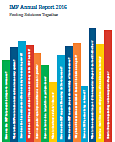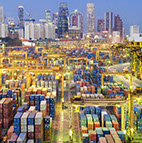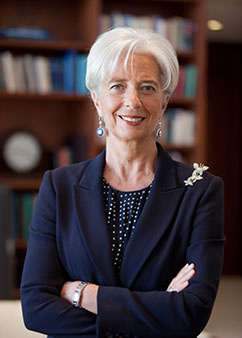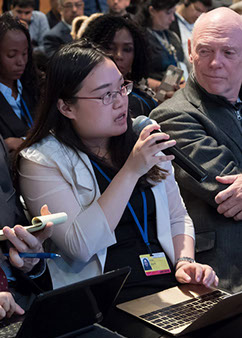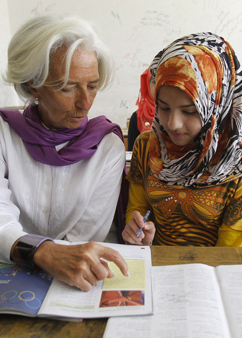Quota Reform
For a more representative, modern IMF
The reforms significantly increased the IMF’s core resources, enabling the institution to respond to crises more effectively and also improve the IMF’s governance by better reflecting the increasing role of dynamic emerging market economies and developing countries in the global economy.



More than 6 percent of quota shares are shifted to dynamic emerging market economies and developing countries, and also from overrepresented to underrepresented members.
In December 2015, the U.S. Congress adopted legislation to authorize the IMF 2010 quota and governance reforms, and all the conditions for their implementation were met in January 2016. These wide-ranging historic reforms are a crucial step that has strengthened the Fund’s role in supporting global financial stability.
Implementation of the reforms, approved by the Board of Governors in 2010, has enabled a more representative, modern IMF that is better equipped to meet the needs of its member countries in the twenty-first century. The reforms built on an earlier set of institutional changes passed by the Board of Governors in 2008.
Reforms include:
Reforms include:
All IMF members’ quotas increase as a result of the agreed bolstering of the Fund’s quota resources to about SDR 477 billion (about $659 billion) from about SDR 238.5 billion (about $329 billion).

The quota shares and voting power of the IMF’s poorest member countries are protected.
Four emerging market economies (Brazil, China, India, and Russia) are now among the IMF’s 10 largest members, joining the United States, Japan, and the four largest European countries (France, Germany, Italy, and the United Kingdom).

16.66%

6.14%

4.07%

3.05%

2.61%

6.21%

5.37%

4.07%

2.66%

2.24%


For the first time, all seats on the IMF Executive Board will be held by Executive Directors elected by IMF member countries. Previously, five of the seats on the Executive Board were reserved for Directors appointed by the members with the five largest quotas.
Multicountry constituencies with seven or more members may now appoint a second Alternate Executive Director so that their constituencies are better represented on the Executive Board.
Advanced European economies have committed to reducing their combined Executive Board representation by two chairs.
How Do IMF Quotas Work?
Each IMF member country is assigned a quota, based broadly on its relative position in the world economy.
Quota subscriptions are a central component of the IMF’s financial resources. A member country’s quota determines its maximum financial commitment to the IMF, voting power, and access to IMF financing.
Economic variability
15%
GDP
50%International reserves
5%Openness to the global economy
30%Quota formula
The current quota formula is a weighted average of GDP (weight of 50 percent), openness to the global economy (30 percent), economic variability (15 percent), and international reserves (5 percent). For this purpose, GDP is measured through a blend of GDP based on market exchange rates (weight of 60 percent) and on purchasing-power-parity exchange rates (40 percent). The formula also includes a “compression factor” that reduces the dispersion in calculated quota shares across members.
Special Drawing Rights
1 SDR = $1.41733
as of April 30, 2016.
For latest SDR exchange rate, see imf.org home page
Quotas are denominated in Special Drawing Rights (SDRs), the IMF’s unit of account. The IMF’s largest member is the United States, with a quota (as of April 30, 2016) of SDR 83 billion (about $118 billion), and the smallest member is Tuvalu, with a quota of SDR 2.5 million (about $3.5 million).
Each member is obliged to provide financial resources based on its quota.
A member’s quota subscription determines the maximum amount of financial resources the member is obliged to provide to the IMF. A member must pay its subscription in full upon joining the Fund: up to 25 percent must be paid in SDRs or other members’ currencies specified by the IMF, and the rest is paid in the member’s own currency.
Each member gets access to financing based on its quota.
Access to Financing
The amount of financing a member can obtain from the IMF (known as its access limit) is based on its quota. For example, under certain types of loans, a member can borrow up to
145%
percent of its quota annually and
435%
percent cumulatively, under normal access. Above these levels, “exceptional access” can be provided if specific risk mitigating criteria are met.
A member's quota largely determines its voting power in IMF decisions.
Voting Power
Each member gets an equal share of what are called “basic votes,” plus additional votes based on quota.
SDR allocations
Quotas also determine how SDRs are allocated to countries.


